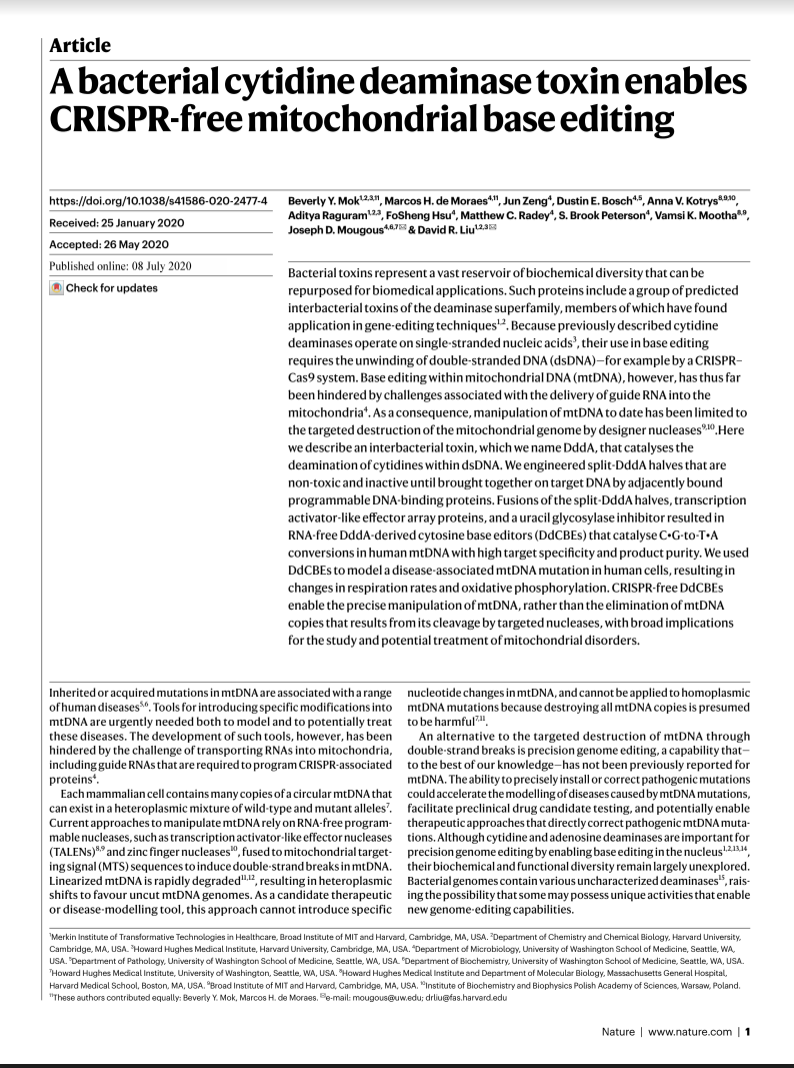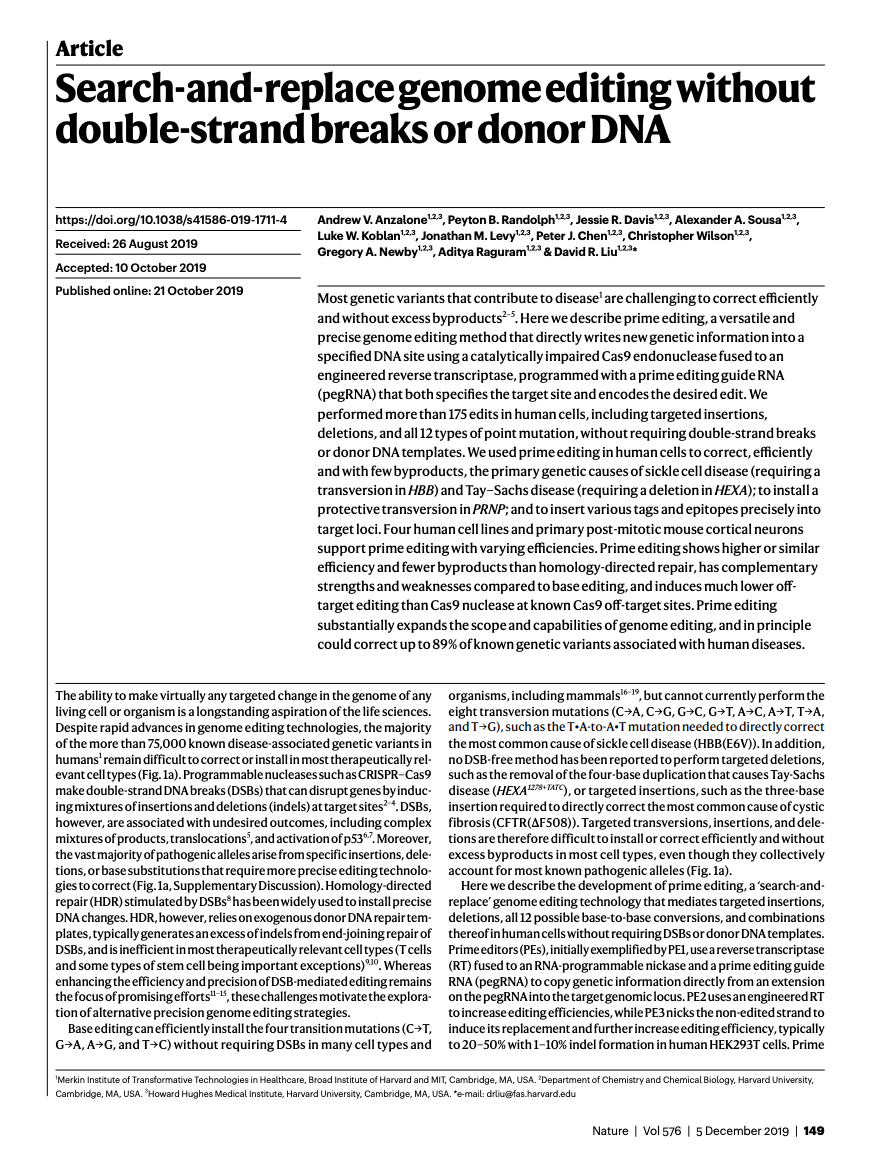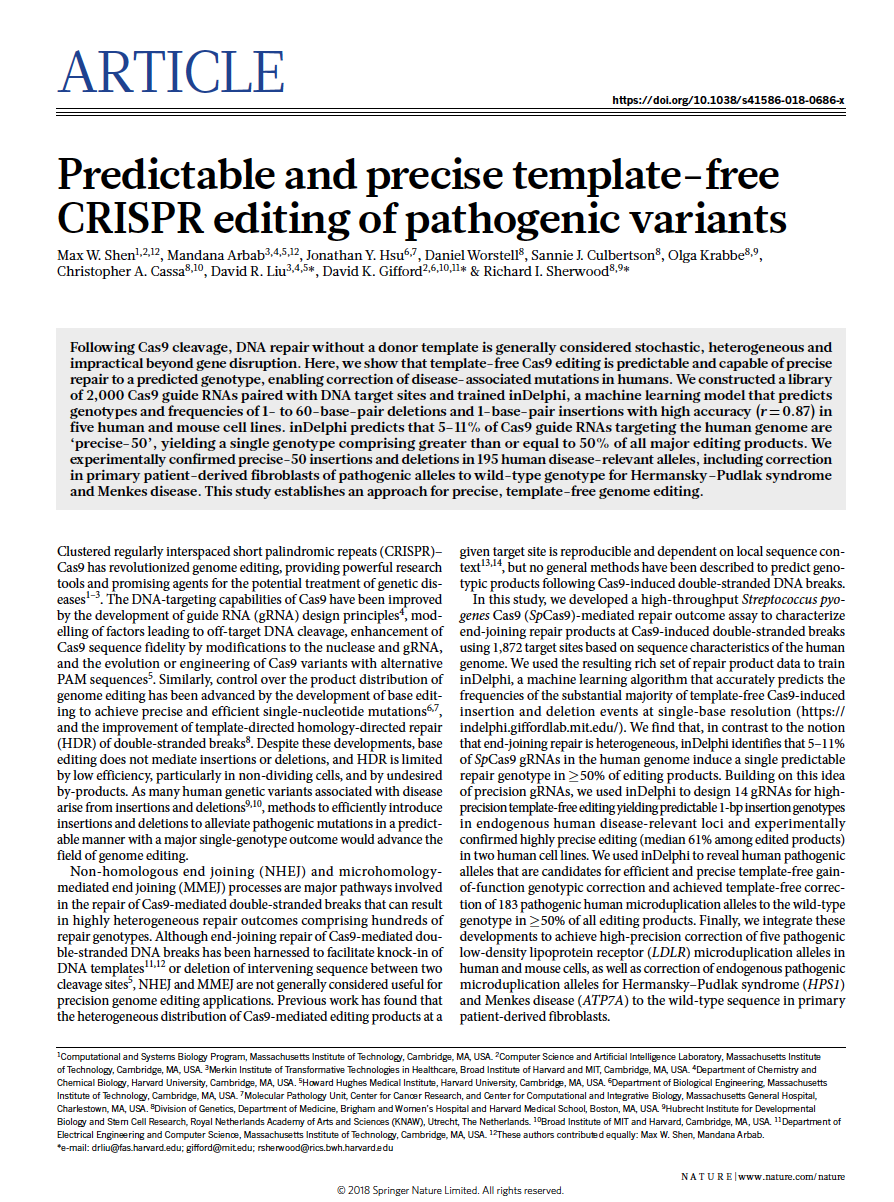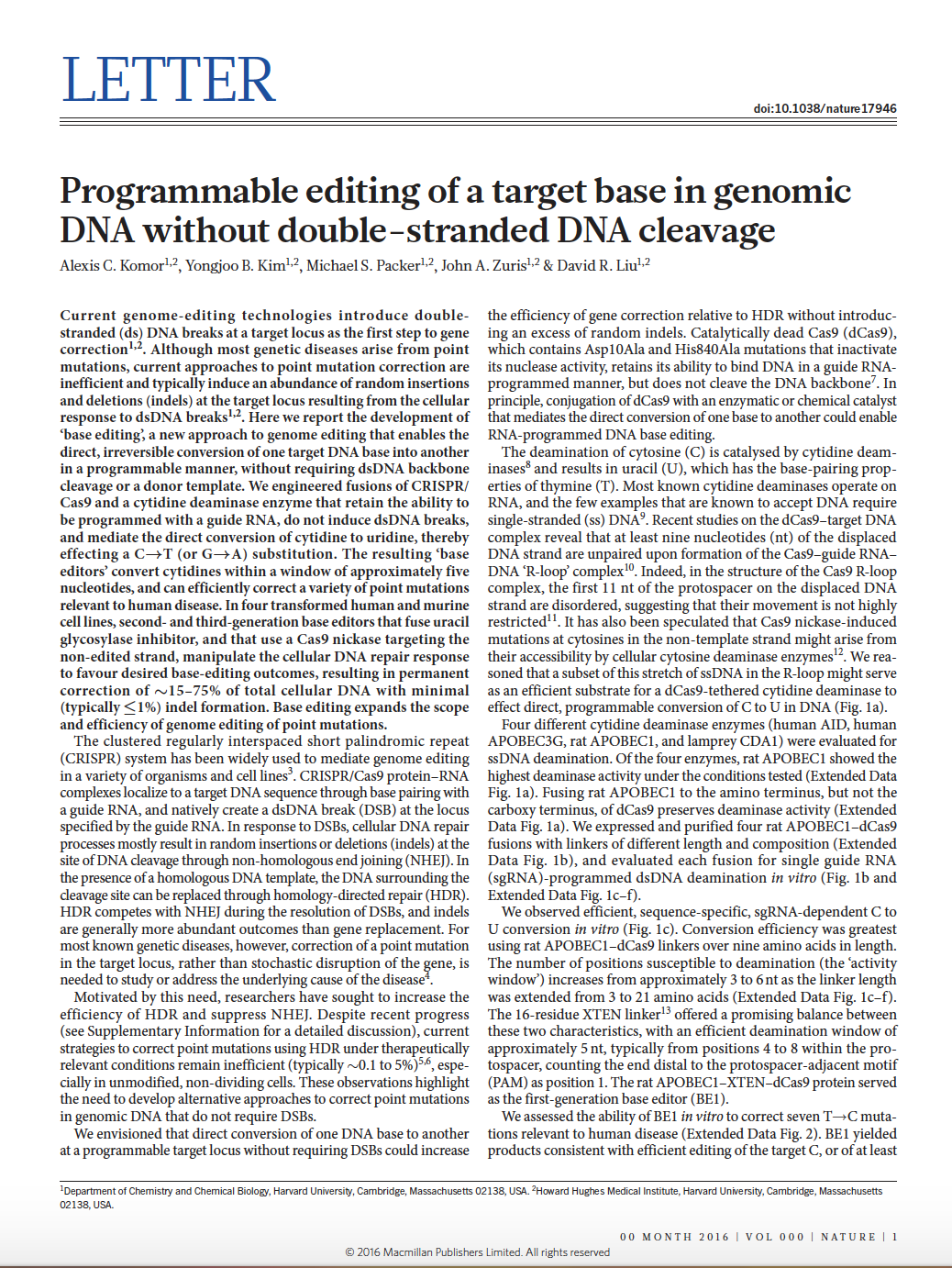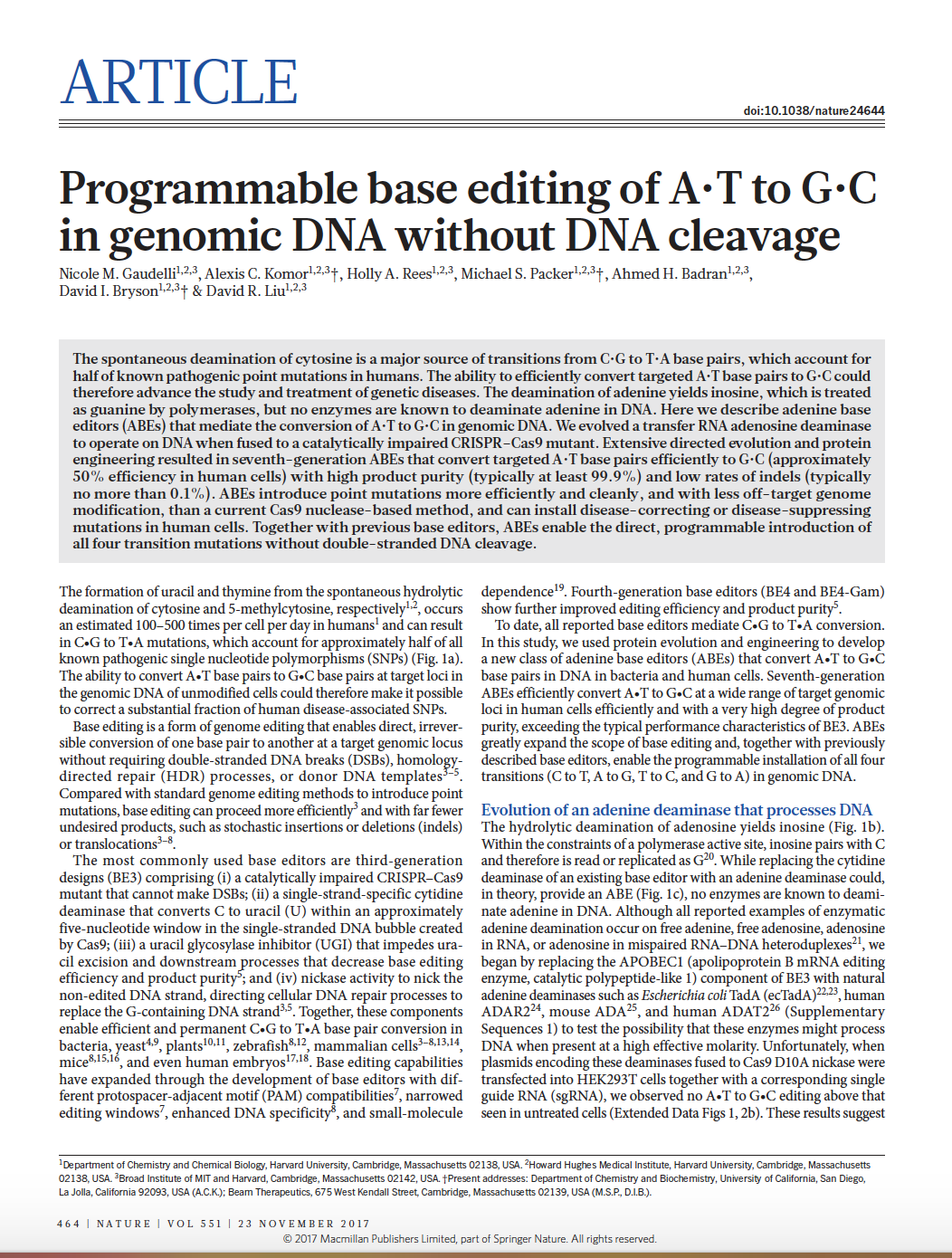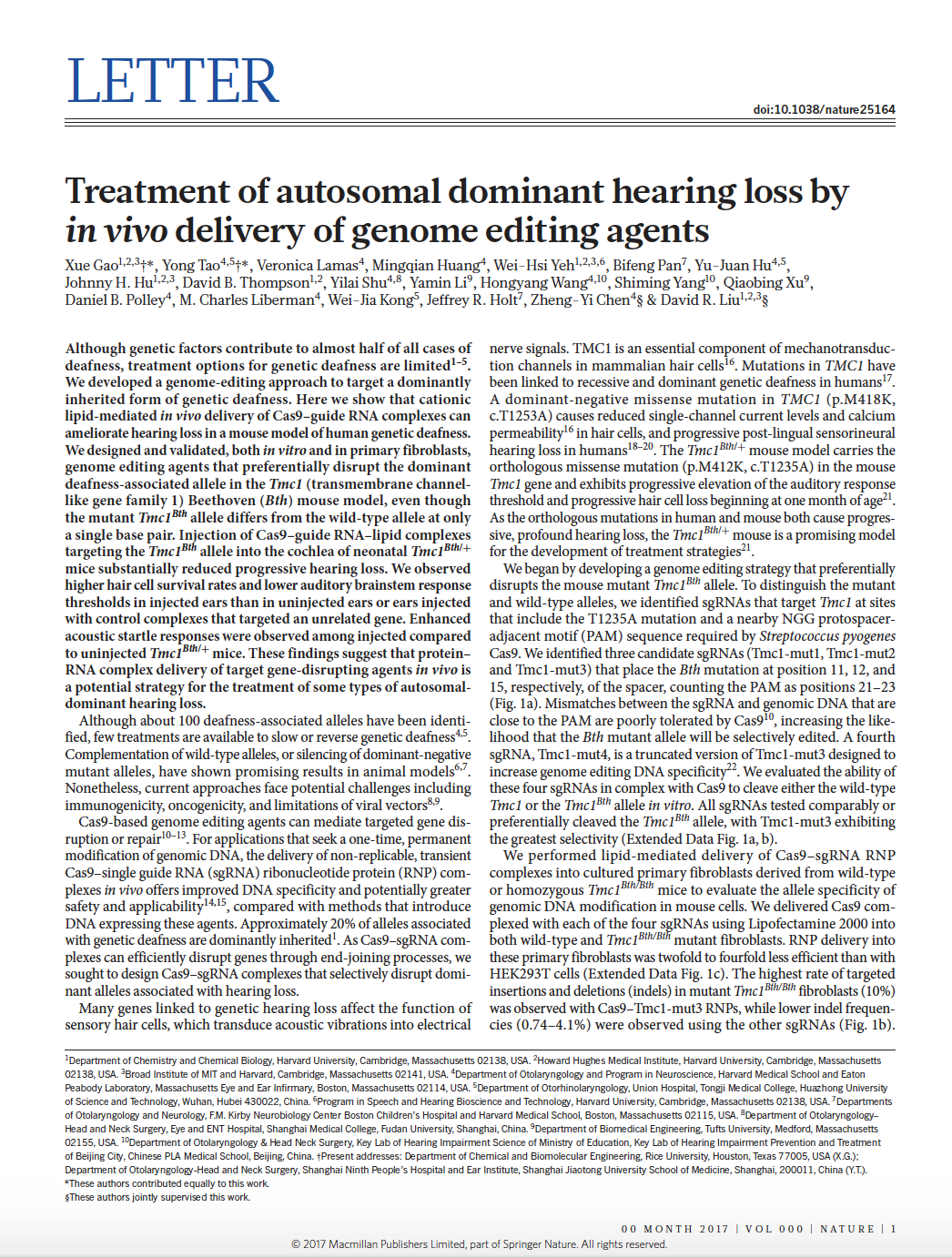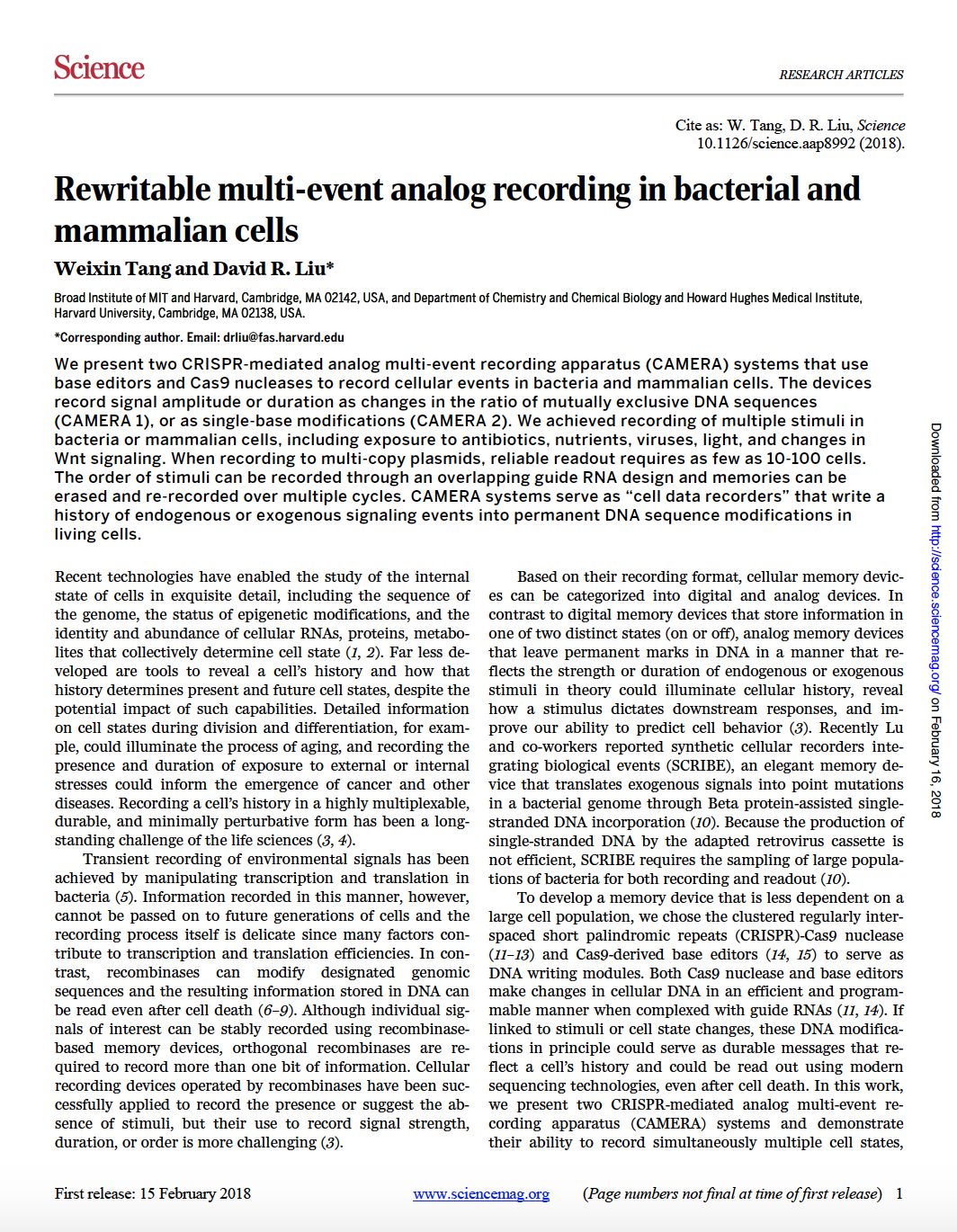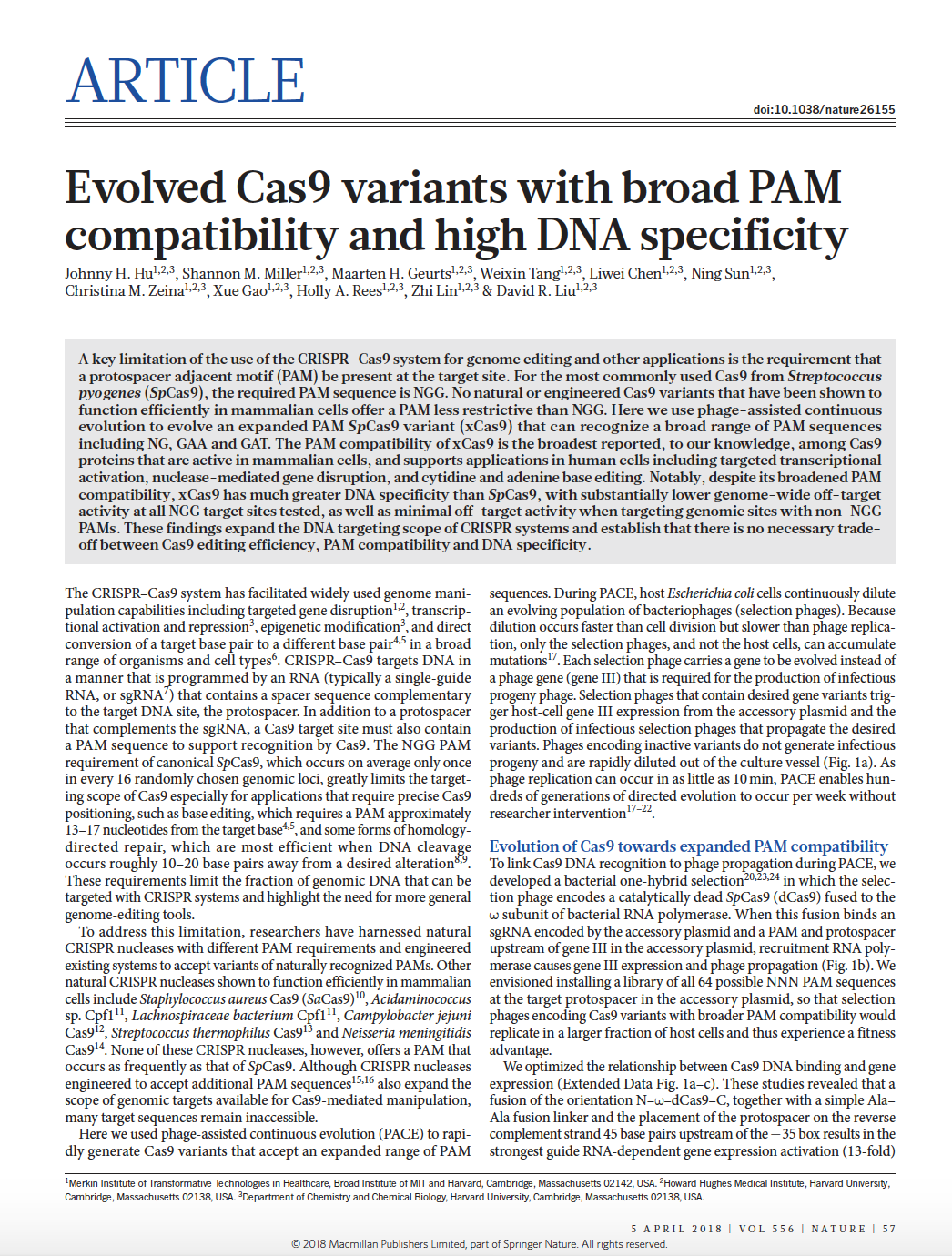Genome Editing
Can we cure genetic diseases by rewriting DNA?
Video Description (from TED Talks): In a story of scientific discovery, chemical biologist David R. Liu shares a breakthrough: his lab’s development of base editors that can rewrite DNA. This crucial step in genome editing takes the promise of CRISPR to the next level: if CRISPR proteins are molecular scissors, programmed to cut specific DNA sequences, then base editors are pencils, capable of directly rewriting one DNA letter into another. Learn more about how these molecular machines work — and their potential to treat or even cure genetic diseases. [This talk was presented at an official TED conference and was featured by TED editors on the TED Talks home page.]
Most genetic mutations that contribute to human genetic disease are challenging to efficiently correct without an excess of undesired editing byproducts. Modern genome editing technologies are constantly being improved to enable targeted changes in the genome of any living cell or organism with improved specificity, targeting scope and deliverability to tissues of therapeutic relevance. To this end, the Liu group has comprehensively evaluated DNA cleavage specificity of various nucleases (ZFNs, TALENs and CRISPR/Cas9), and used the resulting insights to engineer TALENs and Cas9 variants with improved DNA-modification specificity.
In 2016 the Liu group developed base editing, a genome editing method that efficiently converts one base pair to a different base pair without inducing double-stranded DNA breaks or extensive insertions and deletions (indels). The two classes of base editors (adenine base editors or ABEs and cytosine base editors or CBEs) developed by the Liu group can correct all four transition mutations, which collectively account for more than 60% of human pathogenic point mutations. These base editor constructs have been distributed by Addgene more than 9,000 times to more than 3,000 laboratories around the world, resulting in more than 200 published studies using base editing in organisms including bacteria, plants, insects, fish, mice, and primates.
In 2019 the Liu group developed prime editing, a new approach to genome editing in which a reverse transcriptase directly copies edited DNA sequences into a specified target site from an extended guide RNA without requiring double-stranded DNA breaks or donor DNA templates. Prime editing is highly versatile, and can mediate all possible base-to-base conversions, insertions, deletions, and combinations thereof, at target locations near or far from PAM sequences, in a variety of human cell lines and primary mouse cortical neurons. Prime editing shows higher or similar efficiency and fewer byproducts than homology-directed repair, complementary strengths and weaknesses compared to base editing, and much lower off-target editing than Cas9 nuclease at known Cas9 off-target sites. Prime editing substantially expands the scope and capabilities of genome editing, and in principle can correct the vast majority of known genetic variants associated with human diseases.
Please visit our Prime Editing Resources page for more information.
